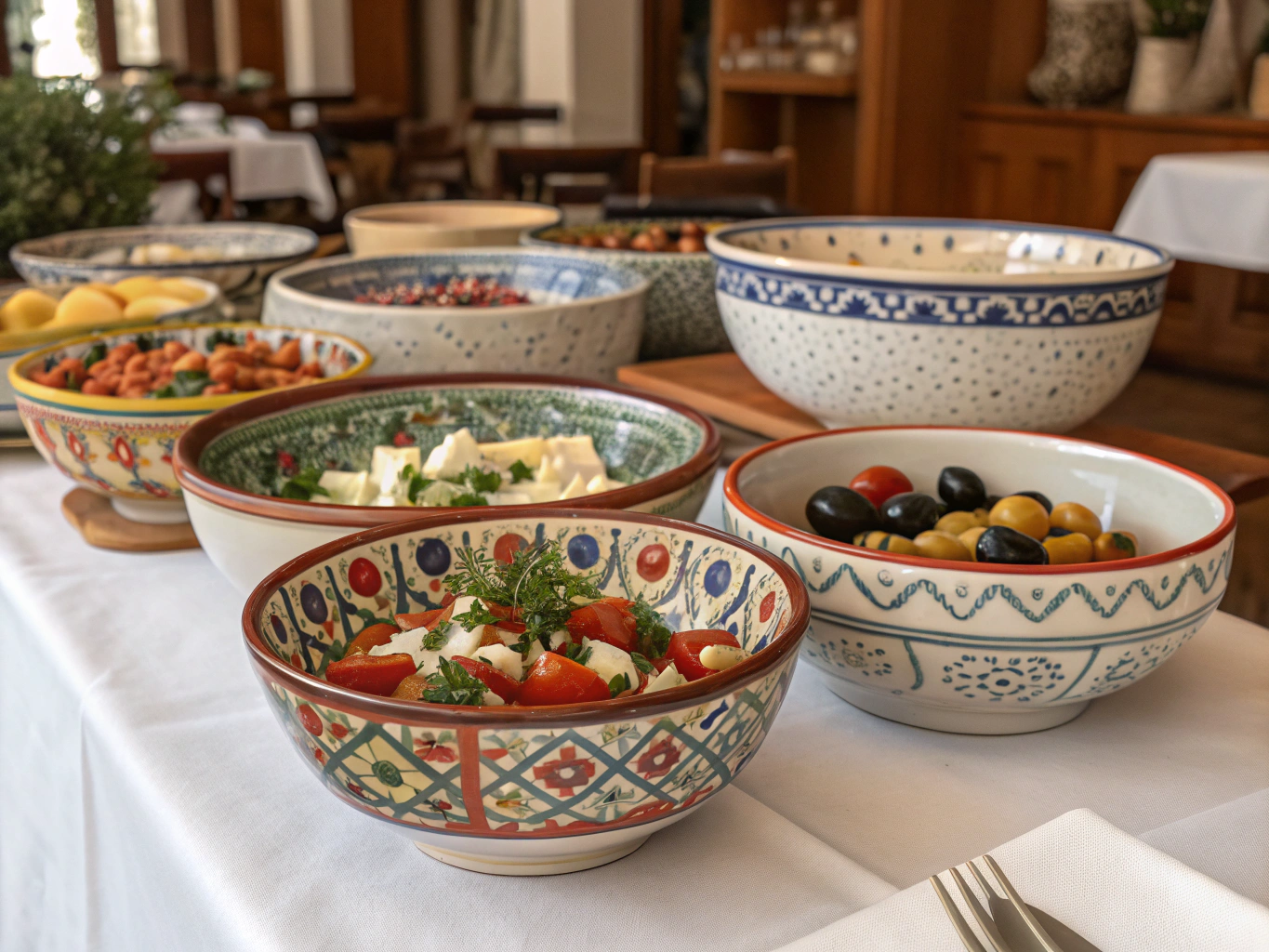
Greek bowls are the kind of dish that hits every mark: fresh, colorful, satisfying, and wildly adaptable. Whether you’re chasing a clean, healthy dinner or sprucing up your lunch prep, Greek bowls bring bold flavor and nourishing ingredients together in one delicious package. In this post, we’ll explore what goes into an irresistible Greek bowl, how to build your own step-by-step, and why this Mediterranean-inspired staple deserves a regular spot in your rotation. Plus, I’ll share my own backstory that led to this soul-satisfying creation.
Growing Up with Grits and Grandma: Why Greek Bowls Speak to Me
From Charleston Roots to Global Bowls
I’m MacMar—a Charleston native who learned to cook without timers or thermometers. My grandma used pinches, whiffs, and big-hearted guesses. But once I got out into the world, I started folding new influences into those soul-soaked roots. One of my most eye-opening food experiences? A Greek street market where bowls gleamed with vibrant veggies, marinated meats, briny cheese, and herby dressings. It was like Southern balance met Mediterranean brightness.
That memory inspired me to create Greek bowls that blend Southern warmth with bold, Mediterranean flavors. Whether I’m serving them at a backyard BBQ or packing them for a riverside picnic, Greek bowls have become my go-to meal when I need simple comfort and nourishing boldness in one bite.
Why Greek Bowls Are Always a Win
Greek bowls are endlessly customizable. Start with a base like brown rice or quinoa, layer on something hearty like grilled chicken or chickpeas, and finish with juicy cucumbers, creamy tzatziki, and a handful of Kalamata olives. I love that building Greek bowls feels like painting with food—it’s about flavor, texture, and balance.
They’re also naturally rich in nutrients, thanks to lean proteins, good fats, and tons of fiber. And unlike many trendy meals, Greek bowls work great for picky eaters or people easing into healthier eating. At FlavivoRecipes, I focus on recipes that don’t require fancy kitchen gear or rare ingredients, and these bowls are a perfect fit.
So whether you’re trying to reimagine leftovers or craft an impressive meal, a Greek bowl offers flexibility, flavor, and fun—all without fuss.
Building the Perfect Greek Bowl
Choosing Ingredients That Sing
This Greek bowl recipe is as satisfying as it is healthy. You can swap proteins, bases, and veggies to match your appetite or fridge contents.
Basic Ingredients
- Grilled chicken breast (use tofu or chickpeas for plant-based version)
- Cooked quinoa or brown rice
- Cucumber, diced
- Cherry tomatoes, halved
- Red onions, thinly sliced
- Kalamata olives
- Crumbled feta cheese
- Fresh dill or parsley
- Tzatziki sauce
- Lemon wedges
- Olive oil
- Sea salt and black pepper
Optional Swaps: Replace tzatziki with hummus, or use cauliflower rice for a low-carb alternative. Add roasted red peppers for sweetness or artichoke hearts for extra twist.
Cooking and Prep Time
Greek bowls are a fantastic low-effort meal with big rewards. Here’s the breakdown:
| Step | Time |
|---|---|
| Marinate & grill chicken | 20 minutes |
| Cook base (quinoa/rice) | 15–20 minutes |
| Chop vegetables | 10 minutes |
| Assembly & final touches | 5 minutes |
Total active time: Around 40–45 minutes for four servings.
Let’s Build It: Step-by-Step Instructions
- Start with marinating thin-sliced chicken in olive oil, lemon juice, garlic, oregano, salt, and pepper. Let it sit for at least 15 minutes.
- While it marinates, cook quinoa or brown rice per package instructions.
- Heat a grill pan or skillet over medium-high heat. Cook chicken until golden and cooked through, about 4 minutes per side. Slice into strips.
- Assemble your bowl with warm grain base, followed by veggies: cucumbers, tomatoes, onions, and olives.
- Add grilled chicken slices on top, sprinkle crumbled feta, and drizzle with extra virgin olive oil.
- Scoop a generous dollop of tzatziki (or homemade Greek yogurt dip).
- Sprinkle chopped herbs, add a lemon wedge, and serve warm or chilled.
Want a vegetarian version? This lemon herb chickpea bowl uses citrusy roasted chickpeas instead of meat and hits all the right notes.
Variations, Nutritional Benefits & Balanced Meals
Healthy Power in Every Bite
Greek bowls don’t just taste good—they’re balanced meals in disguise. Lean proteins like chicken or tofu supply muscle-building strength, while whole grains add fiber and slow-burning carbs for steady energy.
But it’s those raw veggies, good fats from olives, and high-protein dairy like feta that make them truly Mediterranean in spirit. According to the National Heart, Lung, and Blood Institute, this style of eating lowers inflammation and supports long-term heart health.
Greek bowls also help with:
- Satiety (keeps you fuller longer)
- Blood sugar balance
- Gut health thanks to fermented options like tzatziki
With dishes like the Mediterranean quinoa bowl with roasted veggies, you can tweak the mix while staying firmly in the Greek bowl universe.
Flavor Additions and Presentation Tips
Presentation turns regular into wow-worthy. Use a wide shallow bowl so flavors layer visibly. Don’t stir—let colors and textures speak! Try roasted garlic or za’atar oil as a finishing drizzle for elevated flavor.
Want even more punch? Add pickled onions, roasted beets, or drizzle spicy harissa for heat. Items like grilled halloumi or marinated olives bring in extra richness without complicating the cook.
For inspired flavor twists, the plant-powered falafel hummus bowl introduces crispy edges and creamy layers, all while keeping it familiar and wholesome.
Staying Power and Meal Prep Strategy
Make-Ahead Instructions
Greek bowls are the kind of dish you can prep once and eat all week. Grill a bigger batch of chicken and prep veggies in containers—just leave wet ingredients like dressings and tomatoes separate until serving.
Pack them in individual containers with a small cup of yogurt dip or drizzle. In just five minutes each day, you’ve got a meal that feels made-to-order.
Use glass meal prep containers to keep flavors crisp and fresh. Quinoa holds up best over time, and even a dollop of hummus won’t sog up the bowl after a few days in the fridge.
Scaling for Families or Guests
Doubling this dish is easy and budget friendly. If feeding a crowd, create a build-your-own Greek bowl bar with bowls of toppings laid out. Provide meat and meatless options, grains, and dressings separately.
I did this with my friends last spring using the format from my backyard build-your-bowl event and folks loved customizing their creations. From kids to seniors, everyone found a combo that worked for them.
Here’s a quick table to help you scale:
| Serving | Chicken | Grain | Chopped Veg |
|---|---|---|---|
| 2 People | 1 chicken breast | 1 cup cooked quinoa | 1 cup chopped mix |
| 4 People | 2–3 breasts | 2 cups cooked | 2–3 cups mix |
FAQ
What to put into a Greek bowl?
A Greek bowl typically includes a base (rice or quinoa), a protein (like grilled chicken), chopped vegetables (cucumber, tomato, onion), kalamata olives, feta cheese, and a yogurt-based dressing like tzatziki. You can also toss in extras like beans, hummus, or fresh herbs.
What is in the Mediterranean chicken bowl?
A Mediterranean chicken bowl generally contains seasoned grilled chicken on a bed of greens or grains, paired with tomatoes, cucumber, olives, red onions, feta cheese, and a lemony herb-yogurt sauce or tzatziki.
What to have with Greek chicken?
Greek chicken pairs well with roasted potatoes, lemon-herb rice, Greek salad, pita bread, or garlic sautéed greens. A Greek bowl, in fact, is an all-in-one version of these sides combined creatively.
Are Greek bowls good for you?
Absolutely. Greek bowls are nutrient-dense, featuring lean protein, heart-healthy fats, antioxidant-loaded vegetables, and fiber-rich grains. They align with Mediterranean dietary principles shown to boost heart and brain health.
Conclusion
Greek bowls are more than a trendy dish—they’re a whole experience. They combine the spirit of casual eating with nutritionally balanced ingredients and flavors that pop. And best of all, they’re accessible, flexible, and deeply satisfying. I’ve served them on bustling picnic tables, cozy weekday nights, and dinner parties with a Southern twist—and they never disappoint.
Ready to bring Mediterranean sunshine to your kitchen? Fire up the skillet, slice those cukes, and start layering. When flavor meets freedom, you get something magical.
And hey—if you do set off your smoke alarm like I once did trying to blacken my chicken? Just call it “extra-charred” and carry on. That’s the Flavivo way.
